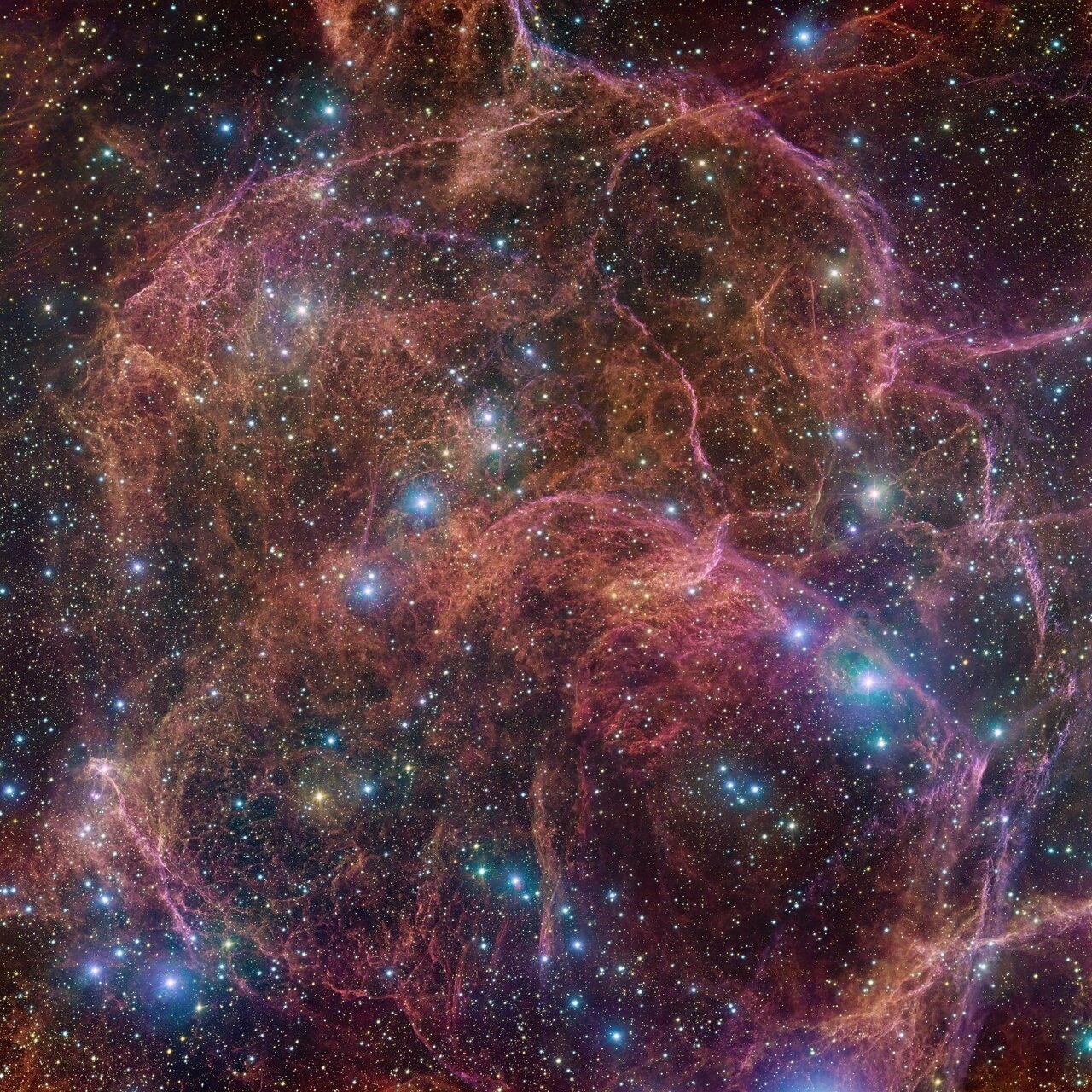Reviewed by Mila PereraNov 1 2022
The image of the Vela supernova remnant was obtained in extraordinary detail by the VLT Survey Telescope, which is hosted at the European Southern Observatory's (ESO) Paranal site in Chile. The gorgeous color tapestry depicts the ghostly remains of a massive star.

The Vela supernova remnant imaged by the VLT Survey Telescope. Image Credit: European Southern Observatory
All that remains of a massive star that perished in a violent explosion some 11,000 years ago is a wispy structure of pink and orange clouds. When the most massive stars die, they often go out with a bang in an outburst known as a supernova. These explosions generate shock waves, which compress the surrounding gas and form delicate thread-like structures. The released energy heats the gaseous tendrils, causing them to shine brightly.
The 554-million-pixel image provides an exceptionally detailed view of the Vela supernova remnant, named after the southern constellation Vela (The Sails). The image could fit nine full Moons, and the overall cloud is considerably larger. This spectacular supernova remnant is one of the nearest to Earth, approximately 800 light-years away.
The progenitor star’s outermost layers were flung into the surrounding gas when it exploded, resulting in extraordinary filaments. The star’s remnants are an ultra-dense ball in which protons and electrons are forced together to form neutrons, a neutron star. The neutron star in the Vela remnant is a pulsar that spins on its axis at a speed of more than ten times per second.
The image is a mosaic of observations made with the wide-field camera OmegaCAM at ESO’s Paranal Observatory at Chile’s VLT Survey Telescope (VST). The 268-million-pixel camera can capture images using various filters that allow different colors of light to pass through. Four distinct filters were used in this image of the Vela remnant, which is depicted by a combination of magenta, blue, green, and red.
The VST, owned by Italy’s National Institute for Astrophysics, is one of the largest telescopes devoted to exploring the night sky in visible light, with a 2.6-meter mirror. The VST Photometric Hα Survey of the Southern Galactic Plane and Bulge (VPHAS+) is an example of such a survey.
This survey has studied a significant galaxy area for over seven years, enabling astronomers to truly understand how stars emerge, evolve, and eventually die.
Flying through the remnants of a dead star
Flying through the remnants of a dead star. Video Credit: European Southern Observatory